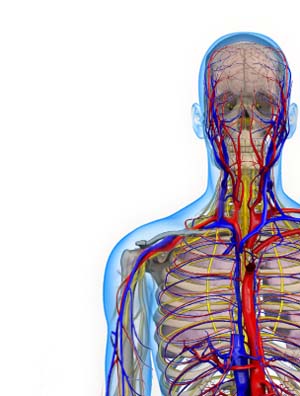Thoracic Outlet Syndrome

What is Thoracic Outlet Syndrome?
The thoracic outlet is a small passageway leading from the base of the neck to the armpit and arm. This small area contains many blood vessels, nerves and muscle. When this passageway becomes compressed the condition is termed as thoracic outlet syndrome. This rare condition is characterized by burning pain in the neck and shoulder, numbness and tingling of the fingers, and a weak hand grip. Thoracic outlet syndrome generally occurs within the age group of 20 to 60 years and is more common in females than in males.
Types of Thoracic Outlet Syndrome
There are 3 types of thoracic outlet syndrome namely:
- Neurogenic thoracic outlet syndrome
- Arterial thoracic outlet syndrome
- Venous thoracic outlet syndrome
Causes of Thoracic Outlet Syndrome
Thoracic outlet syndrome can result due to injury, tumors that press nerves, poor posture that compresses nerves, weight lifting, anatomical defects such as an elongated C7 transverse process, anomalous tissue overgrowth, upper thoracic neurovascular compression, costocoracoid tendon, subclavian muscle hypertrophy and so on.
Symptoms of Thoracic Outlet Syndrome
The symptoms of thoracic outlet syndrome may include numbness and pain in the neck, shoulder and arm, tingling or burning sensation, weakness, limited range of movement of arms, and swelling or redness of your arm, or color changes to the arm or hand.
Diagnosis of Thoracic Outlet Syndrome
A proper diagnosis is very essential for the condition of thoracic outlet syndrome. To evaluate your condition, your doctor will perform a physical examination and collect your medical history. You may be advised to have a chest X-ray, MRI or CT scan. Your doctor might also recommend for blood tests and electromyogram evaluation. Nerve conduction velocity study may be suggested to check the conduction of electrical signals in the nerves.
Treatment Options for Thoracic Outlet Syndrome
The treatment of thoracic outlet syndrome involves both nonsurgical and surgical approach.
Nonsurgical Treatments for Thoracic Outlet Syndrome
- Physical therapy: Exercises can decrease the pressure on the nerves and blood vessels and strengthen the muscles surrounding the shoulder. Maintaining proper posture can help you stand, sit and walk straight.
- Non-steroidal anti-inflammatory medications: can reduce the pain and swelling.
- Weight loss: reducing your weight, if you are considered over weight.
- Lifestyle changes: avoid strenuous activities and other activities that increase the risk or symptoms.
Surgical Treatment for Thoracic Outlet Syndrome
If nonsurgical treatment does not alleviate your symptoms, your doctor may advise surgery. Surgery may involve removing a portion of an abnormal first rib or releasing a muscle that joins the neck and chest. The surgery will depend on the cause of the compression.








